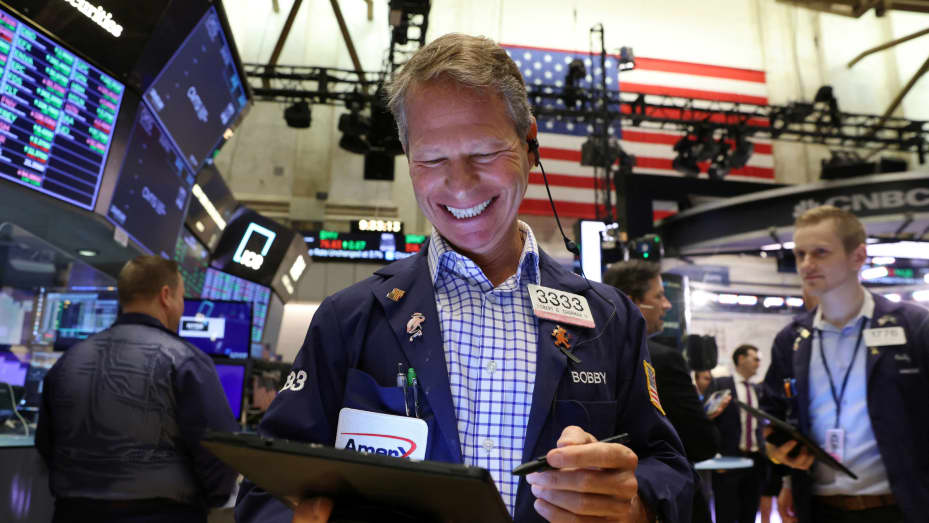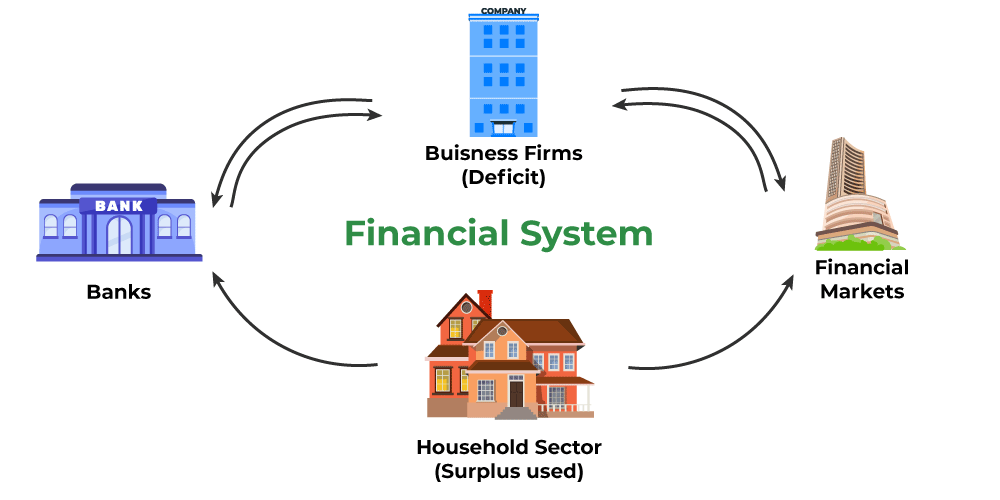Stock Market Comeback: Timing Your Financial Renaissance
You’ve seen the charts dive and heard the buzz. When chaos hits Wall Street, everyone asks: How long does a stock market recovery take? It’s not about waiting for the wind to change; it’s about understanding the signs and patterns that signal a turnaround. Here, I dive into the heart of recovery timelines, dissecting historical data to craft a map for your financial comeback. I’ll share insights that break down the average bounce-back, revealing what history can teach us about today’s market mayhem. Let’s decode together what it takes to ride the wave from bear to bull – and how you can set your sights on a prosperous horizon.
Understanding the Stock Market Recovery Timeline
Unpacking the Average Recovery Time After a Crash
How long does it take for stocks to bounce back? Most times, it’s 3-5 years. That’s the short and simple answer based on historical market recoveries. The average recovery time after a crash usually spans between a few months to several years. Still, this depends on many moving parts.
What happens during market recoveries? We see prices climb back from their lows. Companies start to do better, and investors get hopeful again. Investing during a market recovery can be a smart move. Why? Because you might buy stocks at lower prices before they go up.
Recession Recovery Timelines and Historical Bear Market Recovery
Bear markets are scary, but they don’t last forever. On average, bear market duration is about 1.4 years. Historical bear market recovery shows that after the drop, markets often gain big.
Take the S&P 500, for instance. This group of 500 big companies tells us a lot about the market. The S&P 500 recovery timeframe from the 2008 financial crisis took about four years. But every bear market is different. Factors like why the market dropped and how quickly things get fixed play a role.
Why do some recessions last longer than others? It could be due to how deep the problems go, like bad loans or companies closing. Sometimes, it’s about what the government and banks do to fix it. All these can speed up or slow down a recovery.
Historical market recoveries teach us patterns. They show how the stock market has bounced back from tough spots before. This can guide us when we face new downturns. Knowing about previous market corrections helps. It gives a clue about what might happen next.
Investing during market recovery needs a smart plan. You need to think about long-term investment strategies. It’s not just about buying stocks, but knowing which kind might bounce back quicker. Equities recovery time might differ from how fast index funds come back.
The most critical part of dealing with downturn to recovery? Patience. Many folks who win big in stocks do so because they wait. They understand the waves of the stock market. They don’t panic. They know after a tough time, a bull market return might be just around the corner.
When it comes to seeing how well we’ll bounce back, economic indicators are key. These are signs like how many things we make and sell, and how many folks have jobs. They give us hints about the health of the economy. And a healthy economy often means a stronger stock market.
In the end, recovering from a market crash is about understanding the signs and making wise choices. It’s having the nerve to invest when others are nervous. It’s about how you spread your money out through different kinds of investments. And always, it’s knowing that no storm lasts forever in the wild world of stocks.
The Dynamics of Financial Market Rebounds
Factors Influencing Market Recovery Rates
When the market hits a low, we all ask one thing: How long until it bounces back? Though we crave simple answers, reality is complex. Key things shape how fast markets rebound. They range from how the economy stands up, to changes in how much stuff costs, to how confident people feel about the future. These factors blend together, stirring the pot of market recovery.
Each dip and peak in the market tells a story. Think of the market like weather: just as sun follows rain, markets rise after they fall. The length of time it takes, though, depends on lots of things. When a market crashes, we sift through history to guess the future. We look at old crashes and check how fast things got back to good. This helps us see patterns. Like how long it took before. But remember, no two crashes are the same. So we use history as a guide, not a promise.
Analyzing Recovery After Downturns: Global Patterns and S&P 500 Metrics
Let’s get into the hard data. You ask, “How long does a stock market recovery take?” Here’s the sharp answer: three to five years, on average. But let’s dig deeper. Look at the S&P 500, a mix of 500 big companies. It gives us a snapshot of the market’s health. History shows us the S&P often bounces back in a few years after a big crash.
Now, picture a map of the world. Each country’s stock market is a bit different. Some spring back fast after trouble, while others take their time. These global patterns are like a quilt – each piece is unique but part of a larger design. We look at these pieces to better understand recovery times.
Then, we have bull and bear markets. A bear market is when stocks drop 20% or more and stay down for a while. We usually see a few in a decade. Bull markets are the rally after a bear; when stocks go up and keep going. By watching these ups and downs, we learn about market cycles. It helps us plan for long-term wins, not just quick gains.
Let’s not forget the real world. What goes on around us affects stocks too. Big events like changes in who runs a government, new laws, or global hiccups can all change how quick a recovery happens. Investors like you and me have to watch these signs. Being patient and smart can turn a rough patch into a major win later.
Recoveries are like puzzles. They need many pieces to make a full picture. As an expert, I look at every little detail. This way, I can help you and many others make the best moves. Money talk can be tricky, but when you break it down, it’s just another puzzle to solve. And solving puzzles? That’s my kind of fun. So let’s keep our eyes peeled and our minds sharp as we ride the market’s wave, together.
Strategies for Investing Through the Cycle
The Importance of Asset Allocation Adjustment During Recovery
When a market is healing, knowing how to move your money is key. Asset allocation means spreading your investments to lower risk. Think of it as not putting all your eggs in one basket. This way, if one investment falls, you’re not left with nothing.
As markets recover, you want to tweak your mix. Sometimes you put more into stocks, other times, into bonds or cash. It’s like adjusting sails to catch the best wind. The stock market recovery period often lasts 3 to 5 years. Use this time wisely. Change your money mix based on how long the recovery might take.
Start with safe bets like bonds. Then, as the market improves, shift to stocks that may grow more. This approach can smooth out the bumpy ride of a financial market rebound. The trick is to watch and wait. As signs of recovery show, you adjust your assets accordingly.
Recession-Proof Investments and Index Fund Recovery Post-Downturn
Now, let’s talk recession-proof investments. These are goods or services always in need, no matter the market. Think essentials, like food and healthcare. Even when times are tough, people still need to eat and stay well. Investing in these areas can protect you when the market is down.
Index funds are another smart move. They track parts of the market, like the S&P 500. That means they spread out the risk. They’re like a ready-made mix of many eggs in many baskets. After a downturn, index funds often bounce back with the rest of the market. Historical market recoveries show us index funds tend to follow the market’s climb back up.
A smart strategy during market recovery is gradual investing. You start putting money in these funds even when the market is still down. By doing this, you’re ready to ride the wave up when the rebound comes. Remember, the average recovery time after a crash can vary, but if you get in early and stick with it, your patience can pay off.
Understanding and acting on these strategies can guide you from downturn to recovery. It’s about being smart with how you split your money and staying steady in your choices. Remember, as the market cycles, so should your strategies. Keep your eyes on the goal: a balanced, growing investment over time.
Navigating From Downturn to Recovery: Practical Investor Insights
Investor Patience and Understanding Stock Market Trends
When stock markets crash, they always rebound. But how long it takes can vary. Stock market recovery periods typically span 3 to 5 years. Studying historical market recoveries shows an average recovery time after a crash. This usually falls somewhere between 2 to 4 years.
It’s all about investor patience during recovery. Trends in the stock market go up and down. We see this when comparing past events. Each financial market rebound rate is different. Yet, investing during market recovery can be smart.
It helps to look at recession recovery timelines. These timelines teach us about economic recovery phases. For example, after a bear market, these trends hint at a coming bull market return. To know when a downturn ends, we watch the market downturn duration. Then we get ready for the market cycle changes that follow.
We can learn more from previous market corrections. They show how other factors matter too. These may include politics or global events. Knowing these can help us predict market volatility effects. It can also aid in finding useful economic indicators for recovery.
Long-Term Investment Strategies for Post-Recession Market Growth
Smart investing is not just about quick wins. It’s about setting up for more growth after hard times. Recession and stock performance can scare some people. But there’s a silver lining. Stocks often cost less in a downturn. This is a chance to buy at lower prices.
Equities recovery time can be short or long. Yet, over time, they usually go up. Same with index funds. Their recovery after a downturn can be strong. They offer a good way to bounce back. That’s why in long-term investment strategies, we keep these in mind.
Downturn to recovery processes are a test. They test our grip and our plans. The best move is often to stay calm. Adjust your investment mix as needed. This is called asset allocation adjustment. Also, diversify. Mix your assets to spread risk.
Recession-proof investments are also important. They keep value even when other parts fail. This might be things like gold or government bonds. They’re safer in a crash. Putting money into a mix of places can better shield you from loss.
Post-recession market growth can be strong. It can even make up for any loss and then some. This is key in financial crisis recovery planning. We watch for patterns in long-term market trends. They guide us to when and where to invest.
Investor patience during recovery can pay off big. Understanding these trends, preparing a plan, adjusting as needed, and staying patient. That’s how you can best ride out the waves from a market crash to its high return. This helps ensure your financial renaissance. And it’s grounded in solid market cycle analysis.
In this post, we cracked open the stock market’s recovery timeline. We looked at how long it normally takes to bounce back after a crash and peeked into past recessions and bear markets. We dove into the forces that speed up or slow down a comeback. We checked out patterns from around the world and how the S&P 500 behaves.
We shared sharp tips on how to adjust what you own as markets start to heal. We talked about smart picks that can stand tall in tough times and how index funds find their footing after a fall.
Finally, we talked real talk about waiting out the storm and making sense of market moves. We offered wise words on sticking to your game plan for when the skies clear and the market climbs again.
The deal is, knowing these moves can make a big difference. Yes, the market can be a wild ride, but with patience and the right strategy, you can come out ahead. Keep your eyes on the prize and play the long game. That’s how you win after a market dip.
Q&A :
How long can we expect a stock market recovery to last?
The duration of a stock market recovery can vary considerably depending on several factors, including the cause of the downturn, economic indicators, and government policy responses. Historically, recovery periods have ranged from a few months to several years. Some recoveries have been swift, particularly when driven by strong economic fundamentals or effective fiscal interventions. On the other hand, recoveries from deeper recessions or financial crises have tended to be slower, sometimes taking several years as investor confidence gradually rebuilds and market conditions stabilize.
What factors influence the speed of a stock market recovery?
The speed of a stock market recovery is influenced by a multitude of factors. Key elements include the severity of the preceding market downturn, the underlying economic conditions, levels of consumer and business confidence, interest rates, and regulatory environments. Other important determinants are the timeliness and effectiveness of government and central bank policies aimed at economic stimulus, the resolution of the issues that caused the market decline, and broader global economic trends.
Are there historical precedents that can help us gauge the timeline of market recovery?
Yes, historical precedents can provide insight into potential timelines for market recovery. For instance, the stock market rebound after the 2008 financial crisis was a multi-year process that involved comprehensive policy measures such as interest rate cuts and quantitative easing to stimulate the economy. Similarly, the rapid recovery from the initial shock of the COVID-19 pandemic in early 2020 was due, in part, to unprecedented monetary and fiscal stimulus alongside positive news about vaccine development. By studying past market cycles, investors can gain perspective on how long it might take for markets to recover from different types of economic shocks.
Does the stock market always recover after a downturn?
While past performance is not necessarily indicative of future results, historically, the stock market has always recovered after a downturn over time. The recovery may not occur uniformly across all sectors, and some companies may not survive a downturn, but the overall market has consistently shown resilience in the long term. This recovery pattern underscores the importance for investors of having a well-diversified portfolio and a long-term investment strategy.
Can investors do anything to mitigate risks during a stock market recovery?
Investors can take several actions to mitigate risks during a stock market recovery. One key strategy is to maintain a diversified investment portfolio to spread risk across different asset classes and sectors. Investors may also consider adjusting their asset allocation in response to changing market conditions and their personal risk tolerance. Emphasizing quality investments, such as stocks with strong balance sheets and stable earnings, can be prudent. Furthermore, staying informed about market trends and economic indicators and avoiding emotional decision-making can help investors navigate periods of volatility and participate in a market recovery. Consulting with a financial advisor is often beneficial for personalized investment advice.



